The object of the Red Wing project was "To determine the optimum economic uses of electricity in agriculture and to study the value of electricity in improved living conditions on the farm." Although not the first service to farms in the U.S., it was likely the first built as an experiment specifically for collecting and publishing engineering and economic data.
1920s
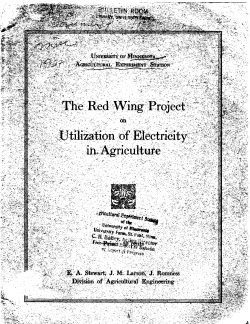
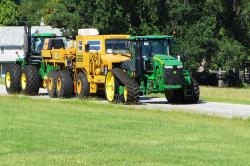
The First Official Nebraska Tractor Test was Started in this Building March 31, 1920. These Pioneer Tests Became Worldwide Standards and are Recognized by The American Society of Agricultural Engineers as an Historic Landmark of Agricultural Engineering. 1980
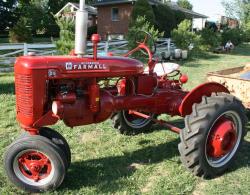
The First Successful Row Crop Tractor Invented by Bert R. Benjamin (ASAE Member) was Operated and Tested on this Farm in 1923. Increased Row Crop Clearance and Overall Versatility Extending the Use of the Tractor to Cultivating, Accelerated the Conversion from Animal Power to Machine and Marked a New Era in American Agricultural Efficiency and Productivity. Dedicated by The American Society of Agricultural Engineers 1980

Designated an Historic Landmark in Honor of J. Brownlee Davidson a Founder of Agricultural Engineering First President of American Society of Agricultural Engineers Organizer of the First Professional Agricultural Engineering Curriculum July 1905 by American Society of Agricultural Engineers

Agricultural Aviation Began In 1921 When C. R. Neillie Got A Military Plane To Dust Catalpa Trees Near Troy, OH. In 1922 B. R. Coad And C. E. Wollman Began Research At Tallulah, LA To Control Boll Weevils In Cotton. They Developed Equipment Using Venturi Induction, Ram Air Pressure And Hopper Agitation. G. B. Post And Wollman Made The First Commercial Dust Applications In Macon, Ga In 1924. In 1925, 18 Aircraft Treated 60,000 Acres Of Cotton Across The South. In 1928, Delta Air Service Was Organized.
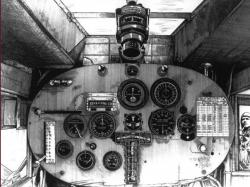
On this site, which was the Dutch Flats Airport, Charles A. Lindbergh made the first flight of his Spirit of St. Louis airplane, constructed in 60 days by dedicated employees of Ryan Airlines, Inc. The 20-minute flight on 28 April 1927 was witnessed by those who built the aircraft. Lindbergh describes the flight:
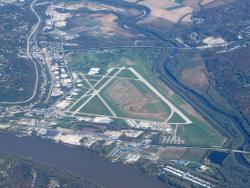
Lunken Field, now also known as Cincinnati Municipal Lunken Airport, opened in 1925 on ground purchased from the Cincinnati Polo Club. The nation’s largest municipal airport at the time, it attracted several aerospace enterprises, starting with early aviator J. Richard “Dixie” Davis, who established his barnstorming enterprise there in 1925. In 1928, several other firms established enterprises at the field – each making history.
At the age of 24, Polish-born mechanical engineer Tadeusz Sendzimir found himself in Shanghai, China, after escaping his homeland to avoid the draft for World War I. In 1918 he opened China’s first nail and screw factory, using jury-rigged drill presses. He spent his spare time walking along Shanghai’s canals and riverfronts, visiting machine shops and scrap iron dealers. He’d bargain in pidgin English with the shop’s assistant while the owner snoozed peacefully in the back, clutching an opium pipe.
Before 1930, refrigerators were not only bulky and expensive but extremely dangerous. Chemicals used as refrigerants—ammonia, methyl chloride, and sulfur dioxide—were not only toxic but highly combustible. In 1929 a leak in a methyl chloride refrigeration system caused an explosion that killed more than 100 people in a Cleveland hospital. It was no wonder that consumers preferred their old iceboxes. That would all change in 1930 with the invention of Freon by a General Motors researcher.
Even as late as a century ago, the diet of most Americans depended largely on what vegetables and fruits were available at the moment. “Putting up foods”— such as the drying and smoking of meat and the canning of fruits and vegetables—was an integral and often exhausting aspect of domestic life. Toward the end of the 19th century commercial canners began offering a wider variety of foodstuffs but still couldn’t compete with fresh food in flavor or nutritional value.
Innovations

Lunken Field, now also known as Cincinnati Municipal Lunken Airport, opened in 1925 on ground purchased from the Cincinnati Polo Club. The nation’s largest municipal airport at the time, it attracted several aerospace enterprises, starting with early aviator J. Richard “Dixie” Davis, who…
Read More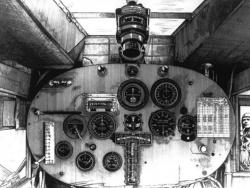
On this site, which was the Dutch Flats Airport, Charles A. Lindbergh made the first flight of his Spirit of St. Louis airplane, constructed in 60 days by dedicated employees of Ryan Airlines, Inc. The 20-minute flight on 28 April 1927 was witnessed by those who built the aircraft.…
Read More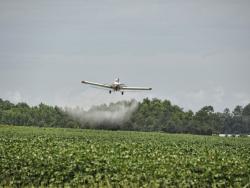
Agricultural Aviation Began In 1921 When C. R. Neillie Got A Military Plane To Dust Catalpa Trees Near Troy, OH. In 1922 B. R. Coad And C. E. Wollman Began Research At Tallulah, LA To Control Boll Weevils In Cotton. They Developed Equipment Using Venturi Induction, Ram Air Pressure And…
Read More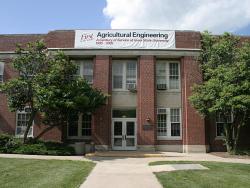
Designated an Historic Landmark in Honor of J. Brownlee Davidson a Founder of Agricultural Engineering First President of American Society of Agricultural Engineers Organizer of the First Professional Agricultural Engineering Curriculum July 1905 by American Society of Agricultural…
Read More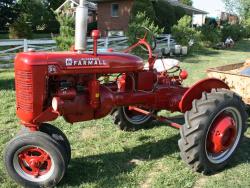
The First Successful Row Crop Tractor Invented by Bert R. Benjamin (ASAE Member) was Operated and Tested on this Farm in 1923. Increased Row Crop Clearance and Overall Versatility Extending the Use of the Tractor to Cultivating, Accelerated the Conversion from Animal Power to Machine…
Read More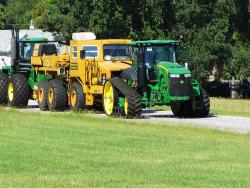
The First Official Nebraska Tractor Test was Started in this Building March 31, 1920. These Pioneer Tests Became Worldwide Standards and are Recognized by The American Society of Agricultural Engineers as an Historic Landmark of Agricultural Engineering. 1980
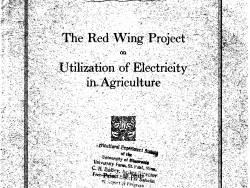
The object of the Red Wing project was "To determine the optimum economic uses of electricity in agriculture and to study the value of electricity in improved living conditions on the farm." Although not the first service to farms in the U.S., it was likely the first built as an…
Read More

